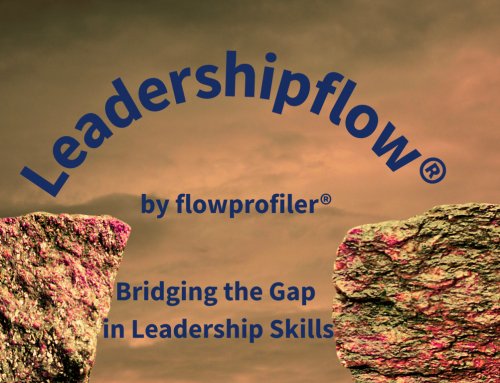Leadership development programmes often focus on skill transfer, teaching leaders how to make decisions, resolve conflicts, and manage change. However, this skills-only approach often leaves a crucial gap in leadership effectiveness. ‘the implementation gap’. The difference between what a leader knows and what they can do in real-life situations is where leadership development frequently falls short. Addressing this gap requires more than just teaching technical skills; it demands a focus on behavioural competencies.
The Implementation Gap in Leadership
Research shows that leadership development programmes focusing solely on skills can lead to an implementation gap, the disconnect between theory and practice. According to a report by the Center for Creative Leadership, while 77% of organisations report a lack of strong leadership, only 48% feel prepared to develop future leaders. This gap exists primarily because many programmes fail to address the behavioural side of leadership. This leaves leaders equipped with knowledge but unable to apply it effectively when it matters most.
implementation gap, the disconnect between theory and practice. According to a report by the Center for Creative Leadership, while 77% of organisations report a lack of strong leadership, only 48% feel prepared to develop future leaders. This gap exists primarily because many programmes fail to address the behavioural side of leadership. This leaves leaders equipped with knowledge but unable to apply it effectively when it matters most.
A technically proficient leader may understand decision-making frameworks or conflict resolution techniques, but if they lack emotional intelligence or adaptability, they are unlikely to perform well under pressure. Inconsistent performance in these real-world scenarios often leads to unstable team dynamics, missed opportunities, and a general erosion of trust and confidence within the team. Leaders must possess the behavioural flexibility to adjust their approach, inspire confidence, and create an environment of psychological safety for their teams to thrive.
A manager equipped with conflict resolution techniques may still fail to resolve disputes if they lack the emotional intelligence to understand underlying team tensions. As Daniel Goleman notes in his work on emotional intelligence, it is not just cognitive intelligence but emotional understanding that often sets high-performing leaders apart from the rest . Leaders who can empathise with their teams, manage their emotions, and recognise the emotional needs of others are more likely to maintain strong relationships and ensure team cohesion.
The Importance of Navigating Human Dynamics
Leadership is not just about completing tasks or solving problems, it’s fundamentally about people. The ability to resolve a conflict on paper or make decisions in a vacuum doesn’t translate into effective leadership unless the leader can manage the human dynamics involved. Skills-based training might tell a leader what to do, but it doesn’t teach them how to engage with their team members effectively.
❝Skills-based training might tell a leader what to do, but it doesn’t teach them how to engage with their team members effectively.❞
Effective communication, motivation, and influence are driven by behavioural competencies such as emotional intelligence and empathy. Leaders who can manage their own emotions while also recognising and responding to the emotions of others are far more successful in managing teams and achieving results. Without these competencies, even the most skilled leaders will struggle to get buy-in from their teams or build the strong relationships necessary for high performance.
A lack of emotional intelligence can lead to breakdowns in team cohesion, miscommunications, and an inability to resolve conflicts in a way that fosters long-term collaboration. Leaders who focus solely on the technical side of leadership miss the opportunity to build trust, inspire loyalty, and drive engagement—all of which are critical to achieving sustained success.
Behavioural Competencies and Change Leadership
One of the greatest challenges modern leaders face is navigating constant change. Whether it’s organisational restructuring, shifts in market demands, or technological advancements, change is inevitable. However, leading a team through these transitions requires more than just technical knowledge. Leaders who have been trained solely in project management or decision-making frameworks often find themselves at a loss when managing the emotional and psychological impacts of change on their teams.
John P. Kotter, a renowned expert on change management, highlights that up to 70% of change initiatives fail, largely because leaders underestimate the role of emotional and behavioural factors. Leaders who lack resilience, adaptability, and emotional intelligence are often unable to deal with resistance to change, and those who cannot effectively communicate the rationale behind the change fail to inspire their teams to embrace it. This often results in stalled initiatives, reduced productivity, and disengaged employees.
fail, largely because leaders underestimate the role of emotional and behavioural factors. Leaders who lack resilience, adaptability, and emotional intelligence are often unable to deal with resistance to change, and those who cannot effectively communicate the rationale behind the change fail to inspire their teams to embrace it. This often results in stalled initiatives, reduced productivity, and disengaged employees.
Teaching leaders how to manage their own responses to change, while guiding their teams through the emotional landscape that accompanies it, is just as important as teaching the technical steps involved in change management. Leaders must be equipped to navigate resistance, build alignment, and motivate their teams to move forward with confidence. Without these behavioural competencies, even the most well-planned change initiatives are likely to fall short of their goals.
Closing the Gap: A Balanced Approach to Leadership Development
To bridge the implementation gap, organisations must adopt a more holistic approach to leadership development, one that combines skill transfer with behavioural development. While technical skills are essential, they represent only one part of effective leadership. It is the behavioural competencies that enable leaders to apply those skills in real-world, complex, and dynamic environments.
A report by Harvard Business Review underscores that the most effective leadership development programmes are those that integrate both technical skills and behavioural training. Leaders who demonstrate high levels of both skill and behavioural competency consistently achieve better results, not only in terms of their personal performance but also in terms of team engagement, productivity, and overall organisational success. Programmes that focus on developing both dimensions of leadership create leaders who are not just capable but adaptable, empathetic, and effective in a variety of situations.
Developing Behavioural Competencies: Tools and Strategies
So how can organisations ensure that their leadership development programmes cultivate the behavioural competencies that leaders need? One proven method is through assessments such as flowprofiler®, which measure key behavioural traits like emotional intelligence, adaptability, and resilience. By using these assessments, organisations can gain a deeper understanding of where their leaders excel and where they need further development, both in terms of technical skills and behaviours.
In addition to assessments, leadership coaching and mentorship programmes can play a crucial role in developing behavioural competencies. By working with experienced leaders who model effective behaviours in real-world situations, emerging leaders can learn how to navigate the human side of leadership more effectively. These interactions provide invaluable insights into how to manage team dynamics, respond to emotional cues, and inspire trust and loyalty.
Moreover, experiential learning, where leaders are placed in simulated real-world scenarios that require both technical and behavioural responses, can be highly effective. Such training allows leaders to practise applying their skills in an environment that mirrors the complexities of actual leadership situations, reinforcing the connection between what they know and how they behave.
Leadership development programmes that focus solely on skill transfer are incomplete. While technical skills such as decision-making, conflict resolution, and change management are vital, they are not enough to guarantee leadership success. Leaders need to develop behavioural competencies such as emotional intelligence, resilience, and adaptability to effectively apply their skills in real-world scenarios. Without these competencies, leaders are likely to struggle under pressure, fail to navigate team dynamics, and fall short in leading change initiatives.
To truly prepare leaders for success, organisations must adopt a balanced approach to leadership development, one that fosters both the hard and soft aspects of leadership. By doing so, they can ensure that their leaders are not only technically proficient but also capable of inspiring, motivating, and leading teams to achieve lasting success.
References
- Center for Creative Leadership. (2022). Bridging the Leadership Gap.
- Goleman, D. (1998). Working with Emotional Intelligence. New York: Bantam Books.
- Harvard Business Publishing Corporate Learning. (2023). Global Leadership Development Study.
- Kotter, J. P. (1996). Leading Change. Boston: Harvard Business Review Press.
- Harvard Business Publishing Corporate Learning. (2024). Leadership Development Report: Time to Transform.
- flowprofiler®. (2024). www.flowprofiler.com




